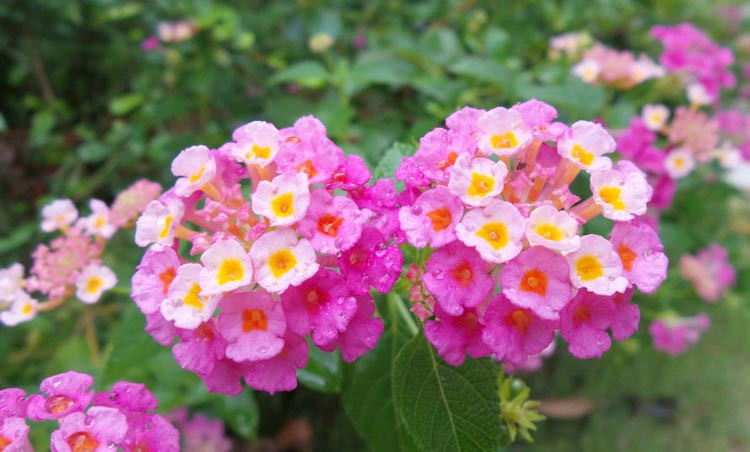Lantana
Lantana is a genus of flowering plants that belongs to the verbena family (Verbenaceae). It is a popular ornamental plant known for its bright and colorful flowers. Lantana is native to tropical regions of the Americas and Africa.
Perennial: Lantanas are perennial plants in warmer climates, meaning they will come back year after year. In colder climates, it is often grown as an annual.
Colorful: They are prized for their colorful flowers, which can range from shades of red, orange, pink, yellow, and white. The flowers are often arranged in clusters, creating a beautiful display.
Blooming season: Lantana is known for its extended blooming season, which lasts from late spring until the first frost. In warm climates, it can bloom year-round.
Attracts pollinators: Lantana flowers are a source of nectar for bees, butterflies, and other pollinators. This makes it a great addition to any garden or landscape that is designed to attract wildlife.
Sun-loving: Lantana is a sun-loving plant that requires at least 6-8 hours of direct sunlight per day. It can tolerate some shade, but its growth and flowering will be reduced.
Easy to grow: Lantana is an easy-to-grow plant that requires little maintenance. It is tolerant of a wide range of soil types and can grow in both containers and in-ground gardens.
Drought-tolerant: Lantana is able to withstand periods of drought, making it a great choice for xeriscaping and water-wise gardens.
Deer/Rabbit: Lantanas are generally considered deer-resistant and rabbit-resistant due to their pungent odor and bitter taste, which are unattractive to deer and rabbits.
Invasive: While Lantana is a popular ornamental plant, it is also considered invasive in many parts of the world. It can quickly spread and outcompete native plants, disrupting ecosystems.

